如图,在平行四边形ABCD中,AE⊥BC,AF⊥CD,垂足分别为E、F。若AE=3cm
如图,在平行四边形ABCD中,AE⊥BC,AF⊥CD,垂足分别为E、F。若AE=3cm,AF=4cm,AD=8cm,求CD的长解:∵ABCD为平行四边形∴AD=BC∴S平...
如图,在平行四边形ABCD中,AE⊥BC,AF⊥CD,垂足分别为E、F。若AE=3cm,AF=4cm,AD=8cm,求CD的长
解:∵ABCD为平行四边形
∴AD=BC
∴S 平行四边形ABCD=BC*AE=CD*AF,即8*3=CD*4
∴CD=4
1.按上面的条件,求平行四边形ABCD的周长
2.若AE⊥BC,AF⊥CD且角EAF=60°,求平行四边形ABCD各内角的度数
3.AE⊥BC,AF⊥CD且AE=4cm,AF=6cm,平行四边形ABCD的周长为40cm,求平行四边形ABCD的面积
4.在平行四边形ABCD中,BC=12cm,AD与BC之间的距离为5cm,AC与BD交于点O,则△BOC的面积是多少?
快 展开
解:∵ABCD为平行四边形
∴AD=BC
∴S 平行四边形ABCD=BC*AE=CD*AF,即8*3=CD*4
∴CD=4
1.按上面的条件,求平行四边形ABCD的周长
2.若AE⊥BC,AF⊥CD且角EAF=60°,求平行四边形ABCD各内角的度数
3.AE⊥BC,AF⊥CD且AE=4cm,AF=6cm,平行四边形ABCD的周长为40cm,求平行四边形ABCD的面积
4.在平行四边形ABCD中,BC=12cm,AD与BC之间的距离为5cm,AC与BD交于点O,则△BOC的面积是多少?
快 展开
4个回答
2012-04-06
展开全部
1﹚由于CD=6,则平行四边形ABCD的周长=2﹙AD+CD﹚=2﹙8+6﹚=28
2﹚∵AE⊥BC而AD∥BC ∴∠EAD=90° 又∵∠EAF=60° ∴∠DAF=30°
∴在RT⊿AFD中 ∠D=90°-∠DAF=90°-30°=60°
∴在平行四边形ABCD中 ∠B=∠D=60° ∠BAD=∠BCD=180°-∠D=120°
3﹚∵平行四边形ABCD的周长为40cm ∴BC+CD=20cm
又∵S平行四边形ABCD=AE·BC=AF·CD且AE=4cm,AF=6cm
∴4BC=6CD即2BC-3CD=0
∴得到方程组BC+CD=20
2BC-3CD=0
解得BC=12 cm,CD=8cm ∴S平行四边形ABCD=BC·AE=48cm²
4﹚∵BC=12cm,AD与BC之间的距离为5cm
∴S平行四边形ABCD=12×5=60cm²
而S⊿BOC=¼S平行四边形ABCD=15cm²
2﹚∵AE⊥BC而AD∥BC ∴∠EAD=90° 又∵∠EAF=60° ∴∠DAF=30°
∴在RT⊿AFD中 ∠D=90°-∠DAF=90°-30°=60°
∴在平行四边形ABCD中 ∠B=∠D=60° ∠BAD=∠BCD=180°-∠D=120°
3﹚∵平行四边形ABCD的周长为40cm ∴BC+CD=20cm
又∵S平行四边形ABCD=AE·BC=AF·CD且AE=4cm,AF=6cm
∴4BC=6CD即2BC-3CD=0
∴得到方程组BC+CD=20
2BC-3CD=0
解得BC=12 cm,CD=8cm ∴S平行四边形ABCD=BC·AE=48cm²
4﹚∵BC=12cm,AD与BC之间的距离为5cm
∴S平行四边形ABCD=12×5=60cm²
而S⊿BOC=¼S平行四边形ABCD=15cm²
展开全部
1﹚根据你的求法:应该CD=6,则平行四边形ABCD的周长=2﹙AD+CD﹚=2﹙8+6﹚=28
2﹚∵AE⊥BC而AD∥BC ∴∠EAD=90° 又∵∠EAF=60° ∴∠DAF=30°
∴在RT⊿AFD中 ∠D=90°-∠DAF=90°-30°=60°
∴在平行四边形ABCD中 ∠B=∠D=60° ∠BAD=∠BCD=180°-∠D=120°
3﹚∵平行四边形ABCD的周长为40cm ∴BC+CD=20cm
又∵S平行四边形ABCD=AE·BC=AF·CD且AE=4cm,AF=6cm
∴4BC=6CD即2BC-3CD=0
∴得到方程组BC+CD=20
2BC-3CD=0
解得BC=12 cm,CD=8cm ∴S平行四边形ABCD=BC·AE=48cm²
4﹚∵BC=12cm,AD与BC之间的距离为5cm
∴S平行四边形ABCD=12×5=60cm²
而S⊿BOC=¼S平行四边形ABCD=15cm²
2﹚∵AE⊥BC而AD∥BC ∴∠EAD=90° 又∵∠EAF=60° ∴∠DAF=30°
∴在RT⊿AFD中 ∠D=90°-∠DAF=90°-30°=60°
∴在平行四边形ABCD中 ∠B=∠D=60° ∠BAD=∠BCD=180°-∠D=120°
3﹚∵平行四边形ABCD的周长为40cm ∴BC+CD=20cm
又∵S平行四边形ABCD=AE·BC=AF·CD且AE=4cm,AF=6cm
∴4BC=6CD即2BC-3CD=0
∴得到方程组BC+CD=20
2BC-3CD=0
解得BC=12 cm,CD=8cm ∴S平行四边形ABCD=BC·AE=48cm²
4﹚∵BC=12cm,AD与BC之间的距离为5cm
∴S平行四边形ABCD=12×5=60cm²
而S⊿BOC=¼S平行四边形ABCD=15cm²
已赞过
已踩过<
评论
收起
你对这个回答的评价是?
展开全部
Intermezzo Flexi-offices
In analyzing flexi-offices ti became clear to us that there is a real,daily tension in the effectuation of their usage,This tension between the intended,traditional ,static planning philosophies and the viable dynamic structure is actually the force that makes them productive,rather than it being a case of one or the other,In calculating the needed surface area of an office for 60people performing very different functions(marketing,administration,online production,offline production,management,origination)one would normally end up with at least 1000m*1000m.Yet within the dynamics of an office culture,if one studies the occupancy rate of spaces and incorporates time-space relationships,one would begin to see a very differentiated usage over time.Our research gave us three categories of occupancy rates for SoftOffice:90%,75%and35%.The first group would contain people spending almost all of their time behind their own desk,The second group would contain people who also spend a lot of time at other people's desks and at meetings,The third group travels around a lot more and spends a lot of time in cars ,in restaurants,in hotels or at home.
This dynamic structure allowed us to make the office with675 平方米.This means32% of traditional planning has been excessive-a mis calculation of the efficiency duly attributed to static thinking.But it is not just the quantifiable side of an office space that has to change:leaving the structure of the office space the same while reducing its size by a third wouldn't do any good.Leaving a standard double-loaded-corridor type or office landscape doesn't stimulate the desired extra communication and change of behavior.Practically,then,the spaces and furniture of the office do not need to be designated to a particular person,or strictly designed tor a type of work;in essence they need to be designed for a state of mind,We set up standard office spaces of general connectivity(flat floor,flat ceiling,general cable access)next to more informal meeting spaces near very small capsules for individual work that desires concentration.The active program is a continuum of both expansion(communicative behavioral types)and contraction(the necessity to shut off,to shut off ,to discuss,meet,write,shout,either in small groups or alone).The passive program, more a sub-program ,is one of bathrooms,cleaning rooms,editing suites and the like.
In analyzing flexi-offices ti became clear to us that there is a real,daily tension in the effectuation of their usage,This tension between the intended,traditional ,static planning philosophies and the viable dynamic structure is actually the force that makes them productive,rather than it being a case of one or the other,In calculating the needed surface area of an office for 60people performing very different functions(marketing,administration,online production,offline production,management,origination)one would normally end up with at least 1000m*1000m.Yet within the dynamics of an office culture,if one studies the occupancy rate of spaces and incorporates time-space relationships,one would begin to see a very differentiated usage over time.Our research gave us three categories of occupancy rates for SoftOffice:90%,75%and35%.The first group would contain people spending almost all of their time behind their own desk,The second group would contain people who also spend a lot of time at other people's desks and at meetings,The third group travels around a lot more and spends a lot of time in cars ,in restaurants,in hotels or at home.
This dynamic structure allowed us to make the office with675 平方米.This means32% of traditional planning has been excessive-a mis calculation of the efficiency duly attributed to static thinking.But it is not just the quantifiable side of an office space that has to change:leaving the structure of the office space the same while reducing its size by a third wouldn't do any good.Leaving a standard double-loaded-corridor type or office landscape doesn't stimulate the desired extra communication and change of behavior.Practically,then,the spaces and furniture of the office do not need to be designated to a particular person,or strictly designed tor a type of work;in essence they need to be designed for a state of mind,We set up standard office spaces of general connectivity(flat floor,flat ceiling,general cable access)next to more informal meeting spaces near very small capsules for individual work that desires concentration.The active program is a continuum of both expansion(communicative behavioral types)and contraction(the necessity to shut off,to shut off ,to discuss,meet,write,shout,either in small groups or alone).The passive program, more a sub-program ,is one of bathrooms,cleaning rooms,editing suites and the like.
追问
用中文好吗
英文看不懂
已赞过
已踩过<
评论
收起
你对这个回答的评价是?
展开全部
1﹚根据你的求法:应该CD=6,则平行四边形ABCD的周长=2﹙AD+CD﹚=2﹙8+6﹚=28
2﹚∵AE⊥BC而AD∥BC ∴∠EAD=90° 又∵∠EAF=60° ∴∠DAF=30°
∴在RT⊿AFD中 ∠D=90°-∠DAF=90°-30°=60°
∴在平行四边形ABCD中 ∠B=∠D=60° ∠BAD=∠BCD=180°-∠D=120°
3﹚∵平行四边形ABCD的周长为40cm ∴BC+CD=20cm
又∵S平行四边形ABCD=AE·BC=AF·CD且AE=4cm,AF=6cm
∴4BC=6CD即2BC-3CD=0
∴得到方程组BC+CD=20
2BC-3CD=0
解得BC=12 cm,CD=8cm ∴S平行四边形ABCD=BC·AE=48cm²
4﹚∵BC=12cm,AD与BC之间的距离为5cm
∴S平行四边形ABCD=12×5=60cm²
而S⊿BOC=¼S平行四边形ABCD=15cm²
2﹚∵AE⊥BC而AD∥BC ∴∠EAD=90° 又∵∠EAF=60° ∴∠DAF=30°
∴在RT⊿AFD中 ∠D=90°-∠DAF=90°-30°=60°
∴在平行四边形ABCD中 ∠B=∠D=60° ∠BAD=∠BCD=180°-∠D=120°
3﹚∵平行四边形ABCD的周长为40cm ∴BC+CD=20cm
又∵S平行四边形ABCD=AE·BC=AF·CD且AE=4cm,AF=6cm
∴4BC=6CD即2BC-3CD=0
∴得到方程组BC+CD=20
2BC-3CD=0
解得BC=12 cm,CD=8cm ∴S平行四边形ABCD=BC·AE=48cm²
4﹚∵BC=12cm,AD与BC之间的距离为5cm
∴S平行四边形ABCD=12×5=60cm²
而S⊿BOC=¼S平行四边形ABCD=15cm²
已赞过
已踩过<
评论
收起
你对这个回答的评价是?
更多回答(2)
推荐律师服务:
若未解决您的问题,请您详细描述您的问题,通过百度律临进行免费专业咨询




